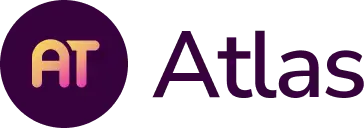At the beginning of every academic year, there is an opportunity for reflection and curriculum adjustments. As schools review their curriculum, teaching practices, and student outcomes from the year, consider these steps to maintain the quality of your curriculum maps and identify areas for refinement and improvement in the year ahead.
Capture the Changes
At the conclusion of each unit of study, teachers reflect on the teaching and learning process, making updates as needed. Similarly, the end of the academic year is an ideal time to review what learning took place—or what was missed—over the past year. Examine your upcoming units of study, note any proficiency standards or content that were not covered or mastered, and make adjustments to the plan in Atlas.
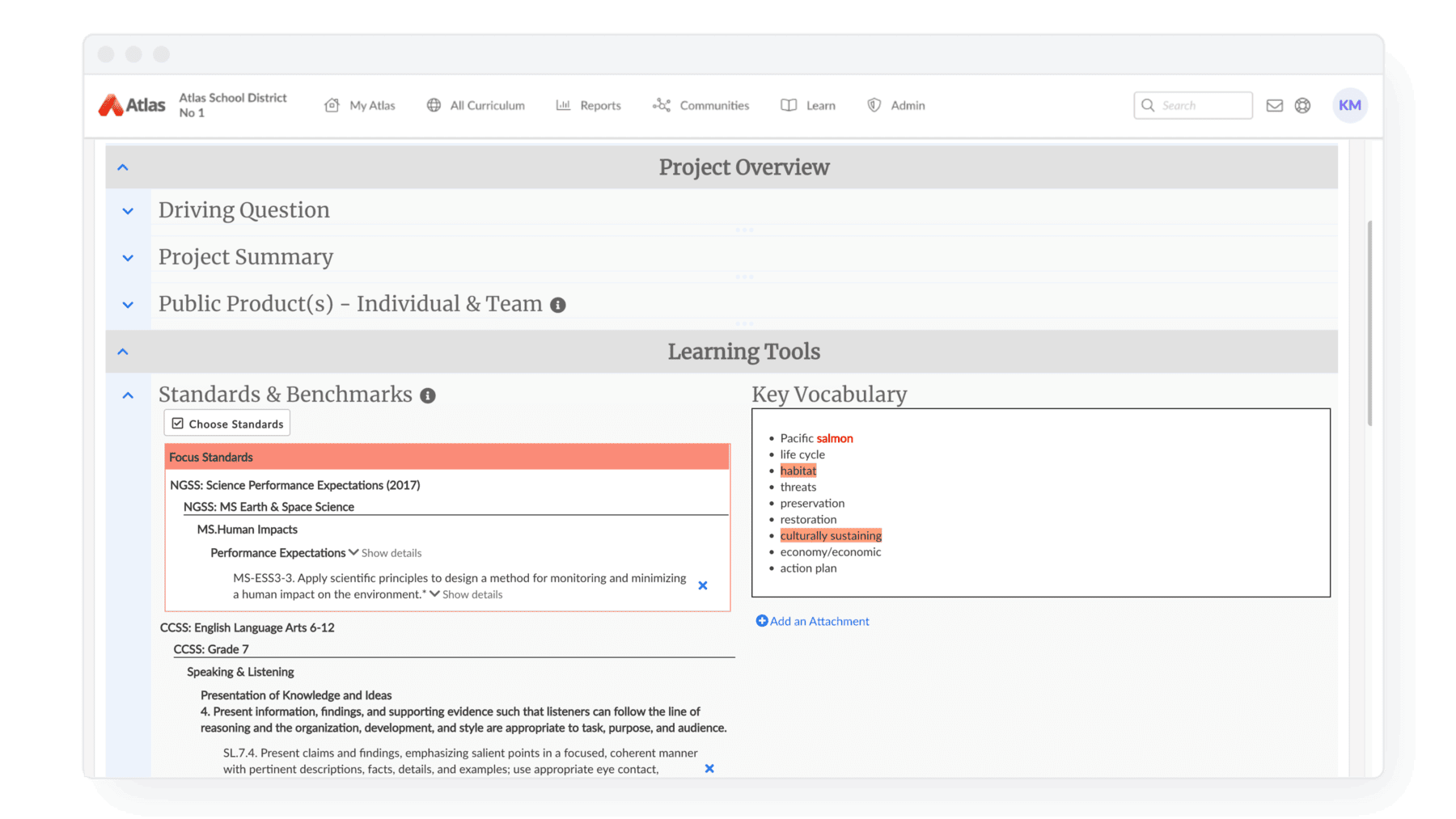
Use the Comparative Unit Calendar to view units in parallel and analyse coverage.
Identify the Gaps
Once teachers have documented their reflections within their units, the next step is identifying gaps in student learning. A curriculum management platform like Atlas enables teachers to generate reports and compare units side by side to pinpoint these gaps.

Use the Comparative Unit Calendar to view units in parallel and analyse coverage.
Prioritise the Essentials
Determining the most essential learning targets is key. Of the standards or learning objectives identified as potential gaps, teachers should determine the non-negotiable essentials. Consider the following questions during this process:
- Which targets are foundational for the next year’s content?
- Which targets continue to spiral in future year levels?
- Which targets may already be addressed in next year’s course?
- Which targets should students have mastered at this year level?
- Which targets capture essential skills that students need for future academic success?
Recognising that not all targets can be revisited the following year, each year level should identify three to five priority targets.
Think Vertically
Once essential targets and standards have been identified, teachers can conduct a vertical review. By leveraging Atlas’ reporting features to analyse progression from one year to the next, and considering identified gaps and priorities, teachers can plan for the following year. Options may include:
- Creating a new unit specifically addressing the missed essential targets from the prior year.
- Copying a unit from the previous year into the next year’s course.
- Incorporating intentional scaffolding in units to support specific targets and address learning gaps.
- Identifying where learning targets spiral from year to year and determining where to provide deeper coverage.
Depending on the year level, subject area, and course, schools may use a combination of these approaches to ensure adequate coverage of all essential learning targets.
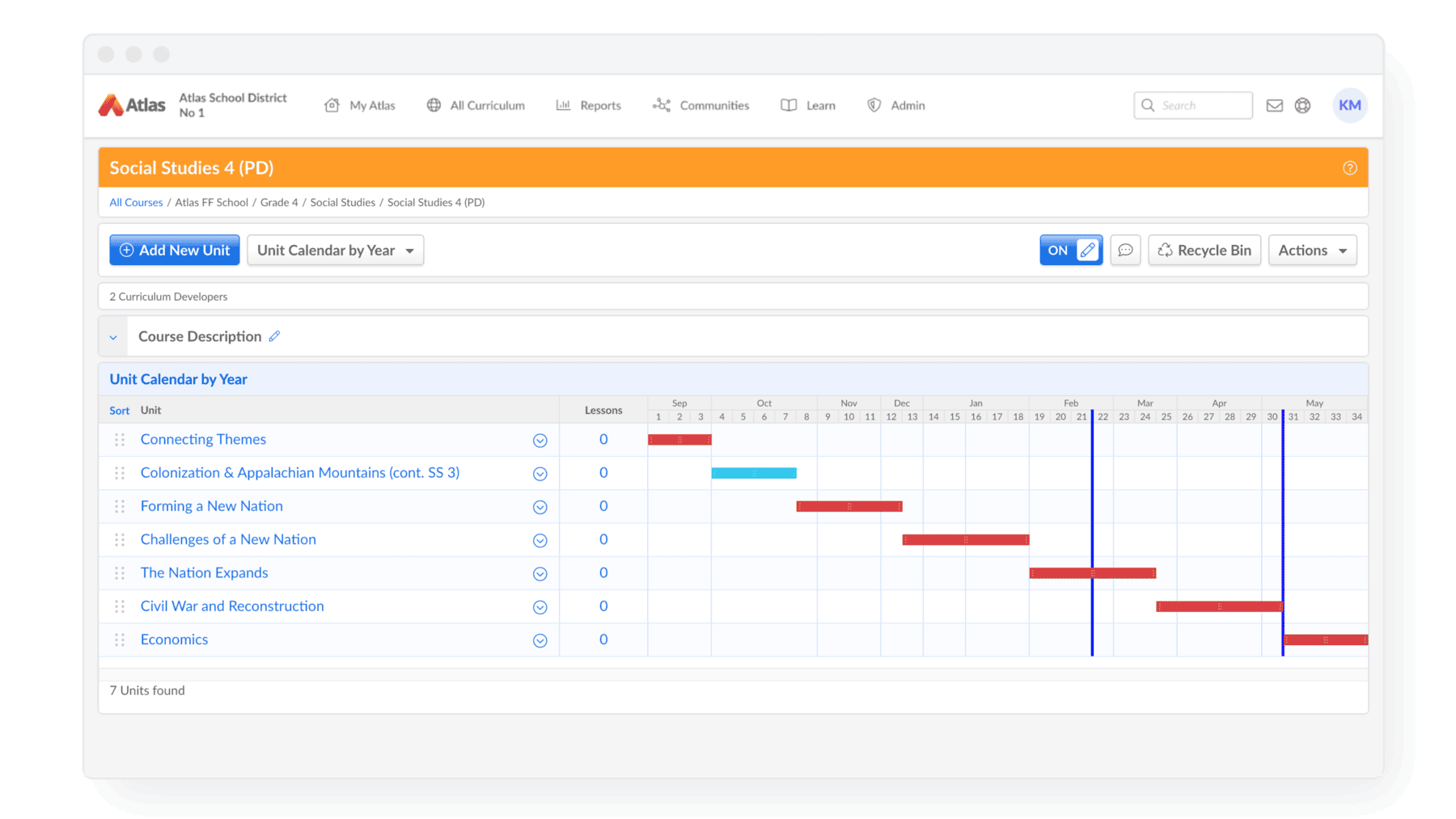
Use the colour-coding feature in the unit calendar to clearly mark changes made to the course.
Edit and Revise
Once vertical reviews are complete, teachers can document updates to ensure learning gaps are addressed. This may involve modifying standards, learning targets, and concepts. As revised learning goals are established, teachers will need to create or adjust assessments and learning activities to ensure alignment and coverage. Using curriculum management software like Atlas can streamline this process by allowing teachers to share units and access resources from other courses.
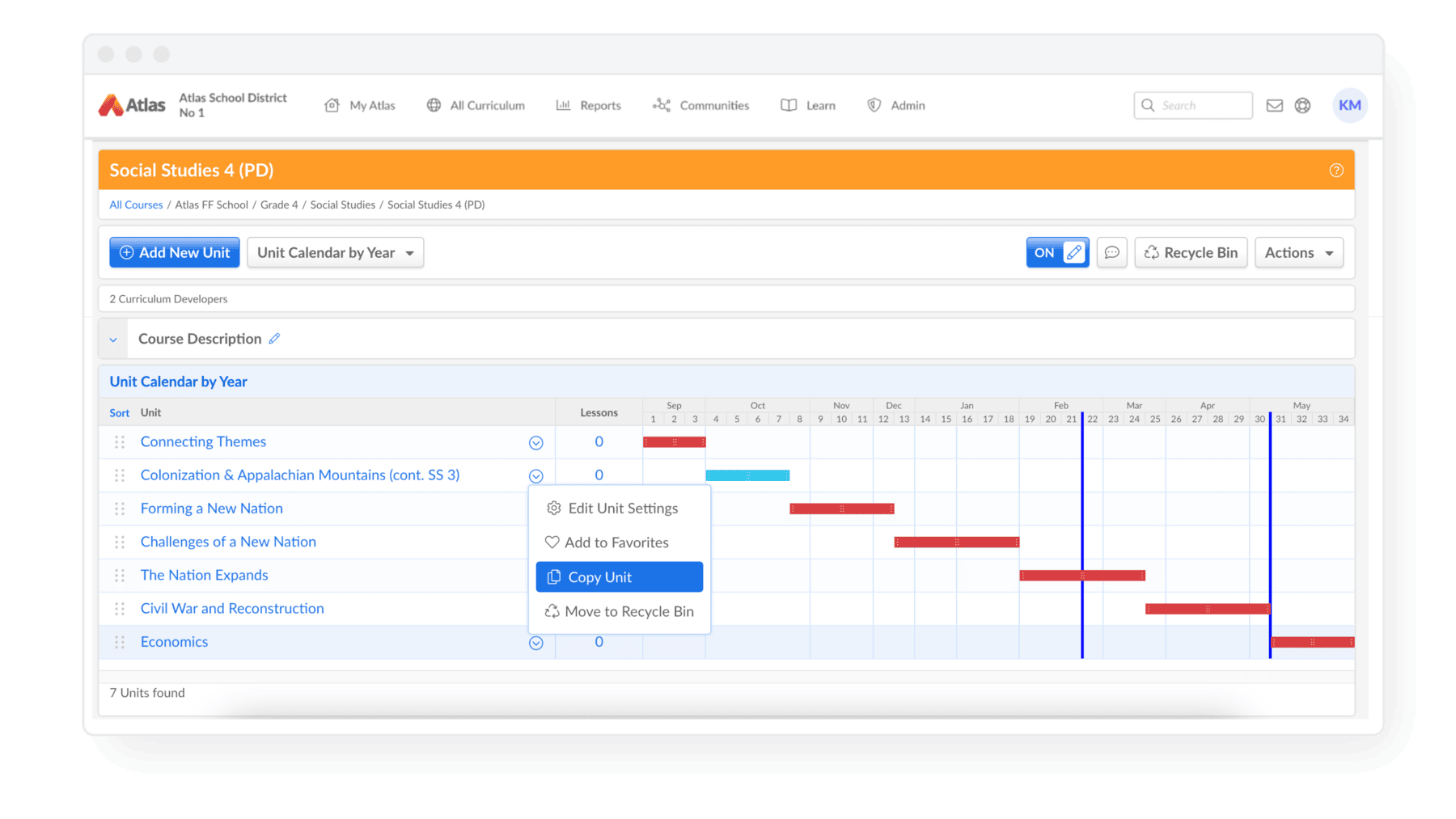
Use the ‘Copy a Unit’ feature to transfer a complete unit from one course to another.
Ongoing Support
As teachers update courses, department heads, instructional coaches, and other leaders can support this work using curriculum management tools. Regular and ongoing curriculum reviews can be facilitated through Atlas’ various reporting features.
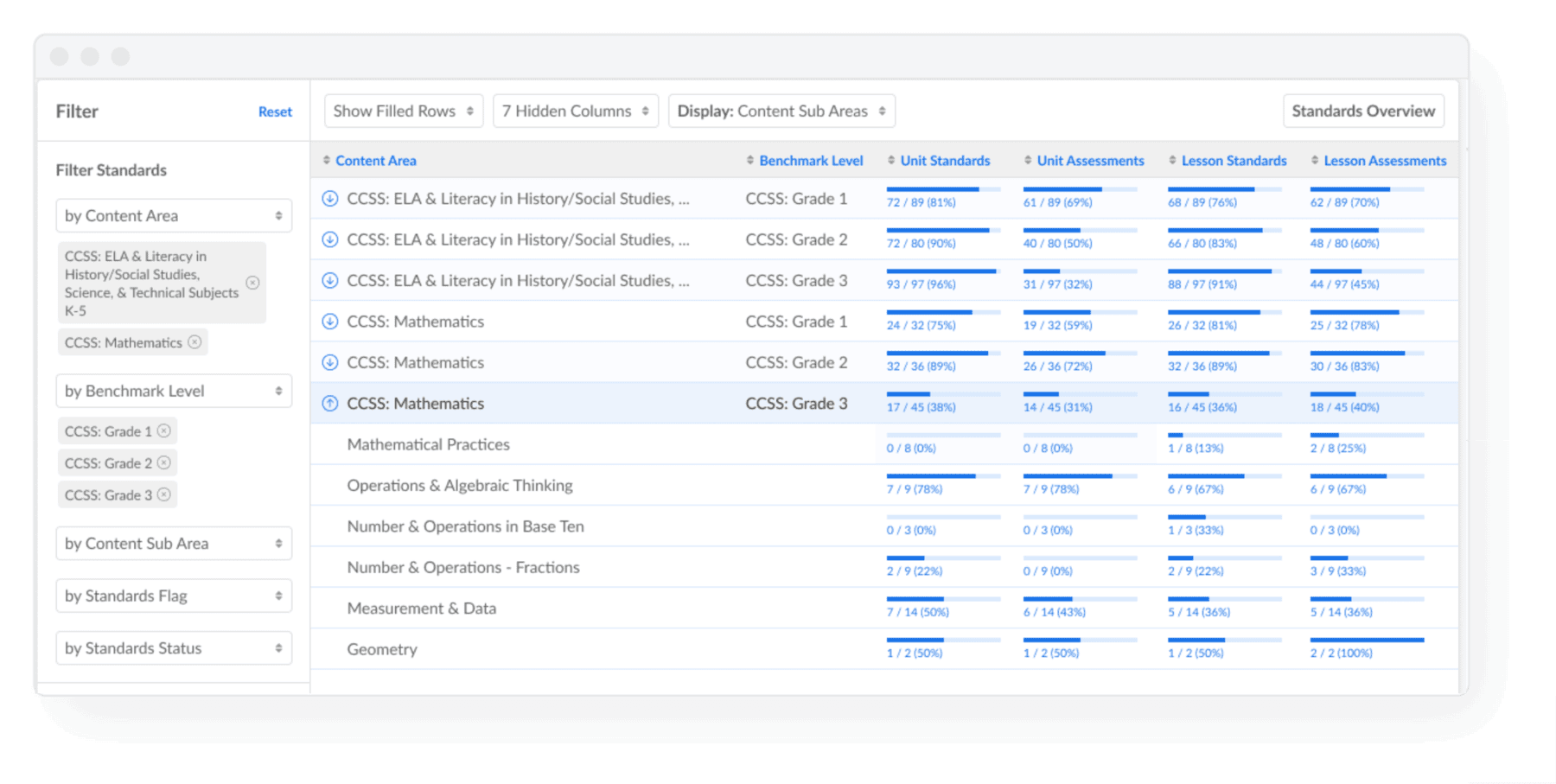
Use a Standards Analysis report to track where year-level standards are being addressed.
By taking the time to reflect, revise, and plan for the upcoming year, we can continue to provide students with a high-quality education and prepare them to become the leaders of tomorrow.
